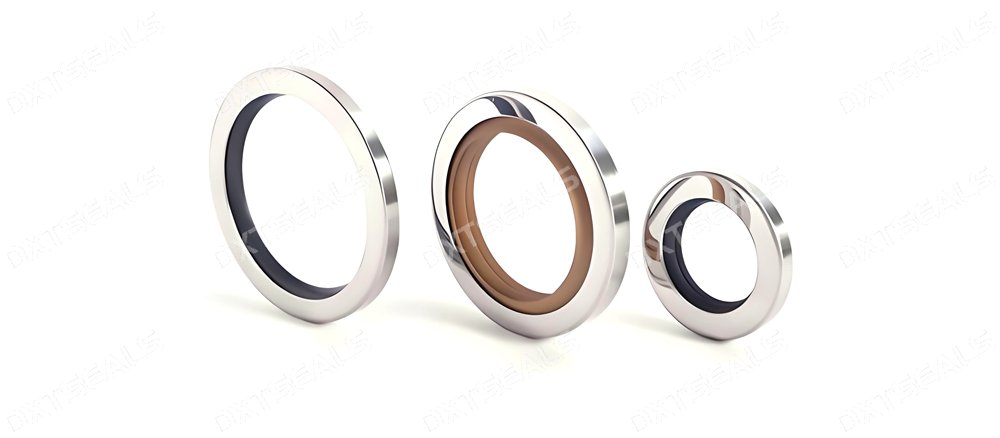
In the world of sealing solutions, not all oil seals are created equal. While conventional rubber oil seals are widely used in various industries, PTFE oil seals, often referred to as spring-energized or Variseal-type seals, are becoming increasingly popular in demanding applications.
In this article, DXTSEALS explores the key differences between these two types of seals and provides practical guidance on which to choose for different operating environments.
🧩 What Are Conventional Oil Seals?
Conventional oil seals, typically made from nitrile rubber (NBR) or fluorocarbon rubber (FKM/Viton), are designed to retain lubricants and exclude contaminants in rotary applications. These seals are cost-effective, easy to install, and reliable under moderate conditions.
Key Features:
-
Cost-effective for standard use
-
Suitable for low-to-moderate temperatures and pressures
-
Excellent for sealing oil, grease, and water
-
Limited chemical and thermal resistance
Common Applications:
-
Automotive engines
-
Agricultural machinery
-
Hydraulic systems
-
General industrial equipment
🔧 What Are PTFE Oil Seals?
PTFE (Polytetrafluoroethylene) oil seals—commonly known as spring-energized seals or Variseals—are advanced sealing components that combine a PTFE lip with an internal stainless steel spring to maintain consistent sealing pressure.
Key Features:
-
Exceptional chemical resistance
-
Operates in extreme temperatures (-200°C to +260°C)
-
Withstands high shaft speeds and pressures
-
Low friction and minimal wear on shaft
-
FDA-compliant options for food and pharma industries
Common Applications:
-
Aerospace and defense
-
Medical and food-grade equipment
-
Oil & gas industry
-
High-speed rotary equipment
-
Aggressive chemical environments
🔍 Comparative Table: PTFE Seals vs. Conventional Seals
| Feature / Property | PTFE Oil Seal | Conventional Oil Seal |
|---|---|---|
| Material | PTFE with stainless steel spring | NBR, FKM, or other elastomers |
| Temperature Range | -200°C to +260°C | -30°C to +200°C |
| Pressure Resistance | High (up to 35 MPa) | Moderate (up to 0.5 MPa) |
| Chemical Resistance | Excellent (resistant to most chemicals) | Limited (depends on elastomer type) |
| Shaft Speed | Very High | Moderate |
| Installation Complexity | Requires precision | Easier installation |
| Cost | Higher initial cost | Lower cost |
| Typical Use | Extreme or critical applications | Standard industrial use |
🏭 When Should You Choose PTFE Oil Seals?
Choose PTFE oil seals when:
-
Operating in high-temperature or chemically aggressive environments
-
You need low friction and minimal maintenance
-
Your application involves high-speed shafts or extreme pressure
-
You’re dealing with food, medical, or cleanroom requirements
-
You need long service life under harsh conditions
Choose conventional oil seals when:
-
Operating under stable, moderate conditions
-
Cost and quick replacement are priorities
-
Standard lubricants and temperatures are involved
-
No exposure to harsh chemicals
🚀 Why DXTSEALS?
At DXTSEALS, we specialize in both standard oil seals and high-performance PTFE spring-energized seals, offering:
-
Customized designs based on your operating conditions
-
Precision CNC-manufactured sealing solutions
-
Short lead times and global delivery
-
Technical support and engineering consultation
Whether you're working with high-pressure pumps, rotating turbines, or specialized pharmaceutical equipment, we have the right sealing technology for your needs.
✅ Conclusion
Both PTFE and conventional oil seals have their place in modern industry. By understanding their differences in materials, temperature tolerance, pressure capacity, and application environments, you can make an informed choice that improves equipment reliability and performance.
Visit www.dxtseals.com to explore our full range of sealing solutions and request a quote tailored to your specifications.
